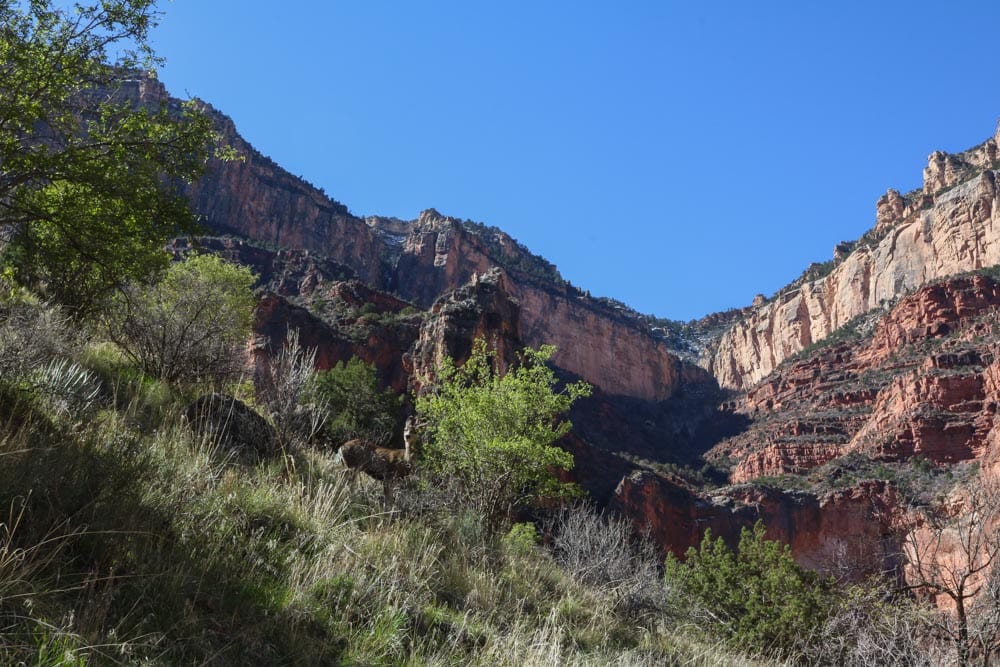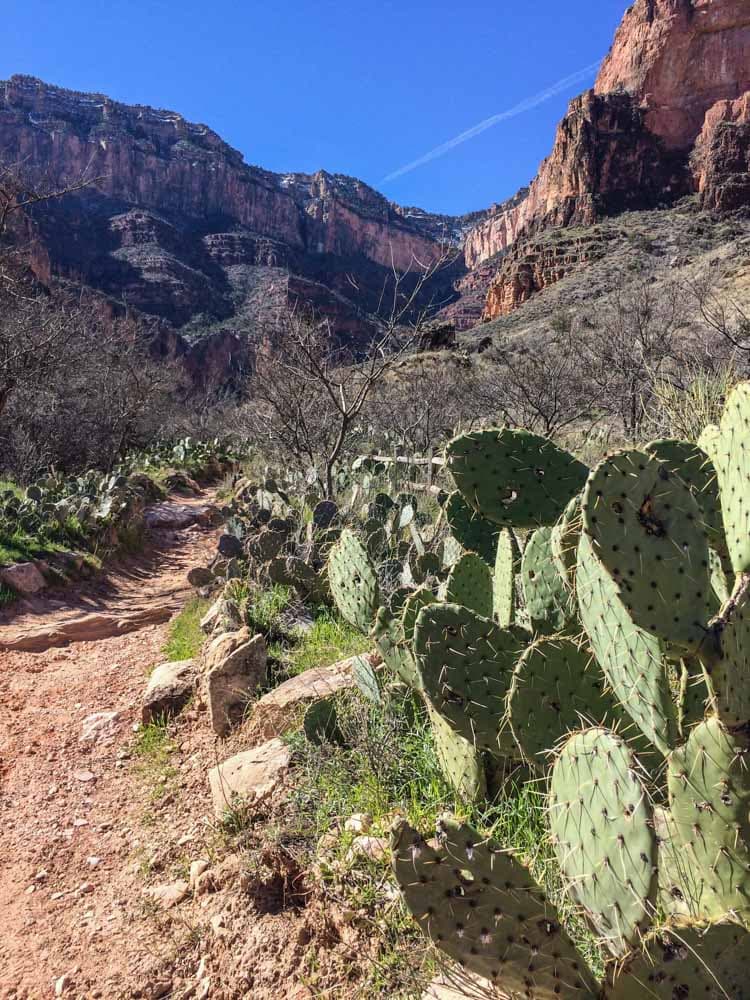This news story about the renaming of Grand Canyon National Park’s Indian Garden to Havasupai Gardens is based on joint November 21, 2002, press release from the National Park Service and Havasupai Tribal Council. You can read the original release here.
Earlier this month, the U.S. Board of Geographic Names voted unanimously (19 against 0) in favor of the request to change the name of Indian Garden to Havasupai Gardens. This request was submitted to the board on behalf of the Havasupai Tribe by the National Park Service.
Prior to this vote, the Havasupai Tribe had passed Resolution 29-21, which resulted in a formal request to the National Park Service to change the name of Indian Garden, a name the Tribe considers offensive.
Now officially known as Havasupai Gardens, this area, the original home of the Havasupai people, is a popular hiking destination below the South Rim of Grand Canyon National Park.
It is a stopping point for day hikers, backpackers and mule excursions on the Bright Angel Trail.
“The people of the Havasupai Tribe have always called the vast Grand Canyon and the plateau lands south of it our homeland,” said Chairman Thomas Siyuja, Sr. “The Creator made the Havasupai People the guardians of the Grand Canyon, and this is a role that we take very seriously. We are a small tribe. But our voices and our spirits are large.”

Indian Garden in Grand Canyon National Park Is Now Officially Called Havasupai Gardens
Originally called Ha’a Gyoh, the National Park Service instituted policies that forced the Havasupai people from Ha’a Gyoh. In 1928, the last Havasupai resident, Captain Burro, was forcibly removed.
Havasupai people continued to live and work within Grand Canyon National Park, however, even despite the forced removal from the inner canyon.
“The eviction of Havasupai residents from Ha’a Gyoh coupled with the offensive name, Indian Garden, has had detrimental and lasting impacts on the Havasupai families that lived there and their descendants,” said Chairman Siyuja.
He also pointed out that approximately 100,000 people visit the area while hiking the Bright Angel Trail each year, most of whom are unaware of this history. “The renaming of this sacred place to Havasupai Gardens will finally right that wrong,” he said.
Havasupai Gardens Name Change Long Overdue, Park Service Says
“The Grand Canyon National Park team was proud to work alongside the Havasupai Tribal Council in our joint effort to rename this culturally significant location at the Grand Canyon,” said Superintendent Ed Keable.
He added that “the Havasupai people have actively occupied this area since time immemorial, before the land’s designation as a National Park and until the park forcibly removed them in 1926. This renaming is long overdue. It is a measure of respect for the undue hardship imposed by the park on the Havasupai people.”
Efforts are already underway to update signage in Grand Canyon National Park, the park’s website and other materials with the new name.

Billy Burro, the Last Havasupai Gardens Resident
The last Havasupai resident, known as Captain Burro, was forcibly evicted from the Havasupai Gardens area in 1928 in order to open up the land for National Park Service management.
“Park employees kept noticing a Native man walking up and down the canyon walls to Indian Garden, and they began to call him Billy Burro. After all, he could hike up and down those walls just like a mule,” said Ophelia Watahomigie-Corliss, a member of the Havasupai Tribe and former Council member.
“This man and his family were pushed out of Indian Garden, forced to leave the land they had farmed for generations so the national park could make it theirs,” she said.
The trail Billy Burro used on a daily basis trail became most of what is the popular Bright Angel Trail today.
The Burro family changed their name to Tilousi, which means “storyteller.” And for generations, the Burro-Tilousi family have fought to protect the history and culture of the Havasupai people.
“As a descendent of the Burro-Tilousi family I am glad to see that we will always remember and honor the true history of my family’s forced relocation due to the development of the Grand Canyon National Park,” said Carletta Tilousi, a member of the Havasupai Tribe and former Council member.
“For that reason, honoring our ancestors and remembering our history is also very important to the Havasupai people. I hope this historic action will help other Tribes take similar steps and reclaim lands back by changing place names for historic and cultural preservation purposes.”
The Havasupai Tribe and NPS are currently planning a rededication ceremony in early Spring 2023.
